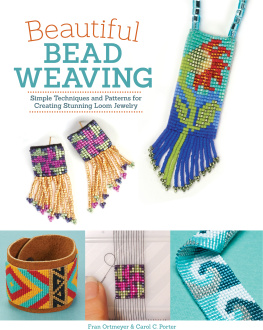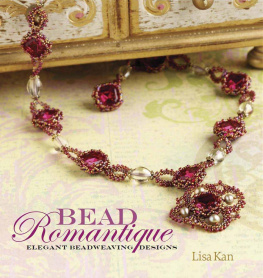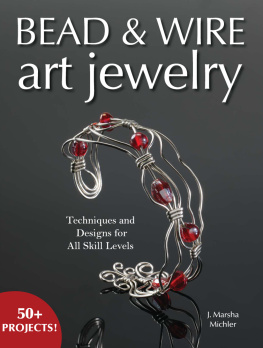All rights reserved.
p. cm.
Includes index.
1. Beadwork. 2. Jewelry making. I. Campbell, Jean, 1964
Acknowledgments
A big thanks to the Interweave book familyBetsy Armstrong, Nancy Arndt, Stephen Beal, Bonnie Brooks, Laura Levaas, Linda Ligon, Paulette Livers, Linda Stark, Ann Swanson, Samantha Thaler, and Christine Townsendfor taking this book from an idea discussed at a Tucson stoplight to a beautiful thing you can hold in your hands.
To my friends at The Bead Monkey for letting me loose with a camera in their shop. And to employee Anna Tollin for helping me in a pinch.
To the very supportive Beadwork magazine staff: Jamie Hogsett and Dustin Wedekind for sharing their wealth of bead know-how and Danielle Fox for her eagle eye.
To my husband Joe Campbell for his unwavering confidence and for always making me laugh, especially when Im up to here in beads.
To my son Dylan, for his insightful gift of pointing out the obvious, and to my daughter Emma, for her welcome interruptions of smiles and laughter. They are both rays of sunshine, even when I serve macaroni and cheese every night for weeks at a time.
And to the contributors and readers of Beadwork magazine who have taught me just about everything I know about beads.

Contents

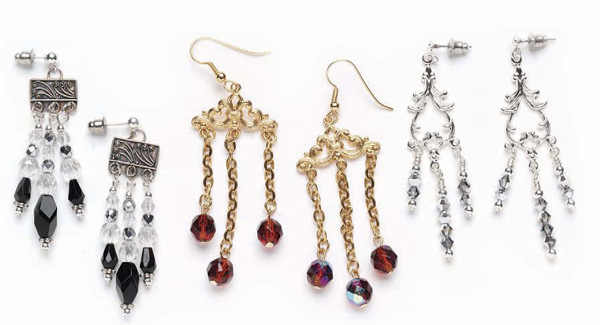

Introduction
Maybe a friend made a necklace and told you it was easy. Then you saw a bracelet in a shop window and wondered if you could make one just like itor even better. The next step had you walking past a bead shop and your inspiration soared at the sight of all the fabulous beads! However it happened, youve had your first introduction to the world of beading and youre hungry to learn more.
If youre a beginner just venturing out into the world of beading, youll need this book as your guide.
Learning to string beads is a great first step in jewelry-making. Its easy, quick, saves money on accessories, and gives you the opportunity to have wonderful new things in your jewelry box. But most importantly, stringing your own necklaces, earrings, and bracelets gives you creative satisfaction. And theres an added benefit: the process of stringing bead after bead is engagingly meditative.
In this book youll learn the basics of bead stringinghow to connect, crimp, and create and Im sure its continued guidance will make you confident about stringing beads. Ive included chapters on shopping for beads, the stringing basics, and working with strung bead patterns and focal beads. Ive added a little wireworking instruction to make you completely efficient. And youll find a chapter on designing your own pieces to top it all off. Armed with all this knowledge, youll be designing your own beautiful jewelry in no time.
The books clear illustrations and photographs will benefit your learning. I suggest you move chapter by chapter, using the lessons as a sort of Beading 101. If you do, the next time you visit a bead shop youll move with confidence from bead tray to bead tray, and once you get home youll know just what to do with your purchases.
So get ready to string! And have a great time.
Walking into a bead shop for the first time can be intimidating! All those beads hanging on the walls, displayed on tables, and hiding underneath counters are just plain scary. But underneath the apparent jumble, there really is organization and purpose.


This section of our Beading 101 describes the shopping experience. Im sure you have lots of questions ...
SHOPPING TRAYS
Most shops have trays, baskets, or bowls by the door or at the counter for you to put your selections inthink of them as mini shopping carts. And, most times, youll find a slip of paper, plastic bags, or check slips with a pen inside these trays for you to write down the price of your individual bead selections. For example, if you choose two beads and they are $1 each, then youd write 2 @ $1. In most shops, writing the price down on the slip is only for loose beads, not for those items that are already marked.


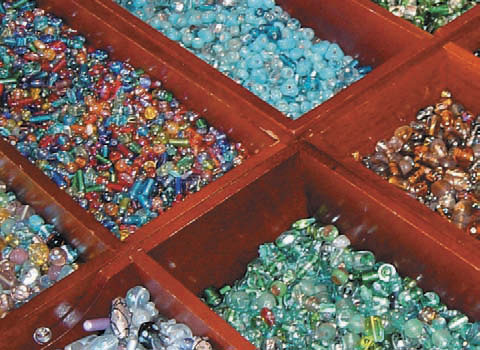
Strands of beads are strung on inexpensive thread. Do not use this thread in your jewelry projects, as it is not sturdy enough for wearables.

THE SHOP
Walk around the entire shop first before you make any selections. This way youll have a sense of what youd like to take home. Youll see that the shop organizes its wares by type of bead. Loose beads are on tables or in trays; tubes of Japanese seed beads are usually placed in bins; hanks hang on the wall. Strands of semiprecious stone, pearl, and bone often hang on the wall as well, and expensive items, such as crystals, sterling silver, and findings are often kept behind the shops counter. Basically, beads are found with like beads.


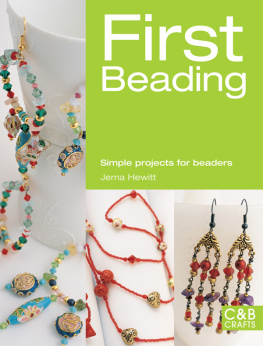
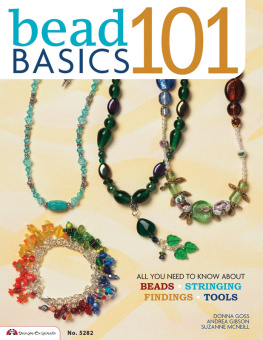
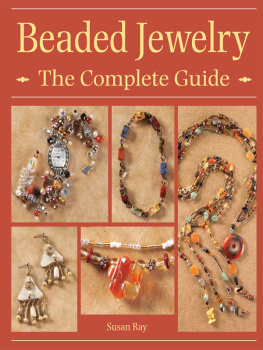
![Danielson Ethan - The beaders bible: [a comprehensive guide to beading techniques]](/uploads/posts/book/197332/thumbs/danielson-ethan-the-beader-s-bible-a.jpg)
